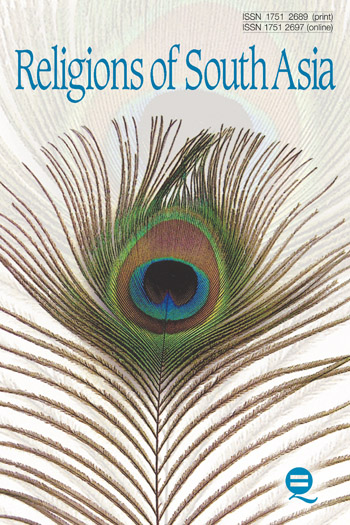Reviews
Utilising considerable experience as both a student and practitioner of yoga, Simon Atkinson takes a deep dive into some of the more esoteric aspects of Krishnamacharya’s teachings. Using primary sources, interviews and original research, his explorations reveal some fascinating inconsistencies, and he shines a light on both where and why these inconsistencies appear. Important reading for scholars and practitioners alike, this book is a major contribution to our understanding of kuṇḍalinī from both textual and personal perspectives.Ranju Roy, yoga teacher in the tradition of Krishnamacharya and co author of Embodying the Yoga Sutra: Support, Direction and Space
Drawing on meticulous philological and ethnographic research, this study identifies and analyses the distinctive role of kuṇḍalinī in the Krishnamacharya yoga tradition, situating it in its complex historical and contemporary contexts. Essential reading for scholars and dedicated practitioners of yoga alike.
Dr James Mallinson, Reader in Indology and Yoga Studies, SOAS, University of London
This scholarly text by Simon (SA) takes an exemplary approach, combining Western critical thinking with an Indian respect for traditional sources. It is good to see an approach that is, on the one hand, respectful and sympathetic yet, on the other, exhaustive and unsparing. SA’s work is supported by many years of painstaking personal research at home and in India and shows an adherence, while looking from inside our tradition, to strict neutrality as regards to which authorities are most sound and credible.
This book holds many revelations.
Who should be reading this book? Certainly, anyone who wants to take a broad and well-informed view of the subject of kuṇḍalinī from the perspective of their own practice and definitely anyone who presumes to teach about it from a non-Shaiva standpoint. It isn’t, however, just about kuṇḍalinī. An appreciation of the way K was able to unite Haṭha and Rāja Yoga, which SA describes in Chapter 4, should be in the mind of everyone who teaches in this tradition. This understanding is really part of our foundations and something that makes us a unique force within the world of Yoga.
The Society of Yoga Practitioners
The book is scholarly, but accessibly written and helpfully structured – the introduction and conclusion are clear and insightful, with supporting evidence presented logically throughout other chapters.
Spectrum, the British Wheel of Yoga magazine
As Atkinson notes, there are few scholarly studies on kuṇḍalinī, and for that reason, this carefully executed study is a valuable contribution to the field. The book will be useful for practitioners of yoga because of its detailed discussion of kuṇḍalinī and the textual foundation that it provides for their practise. A glossary is provided to assist a non-scholarly readership with the many Sanskrit terms that are used throughout the discussion. This book will be of interest to scholars of yoga studies, as well as scholars of South Asian studies because of the careful philological study of Vedic texts.
International Journal for the Study of New Religions









